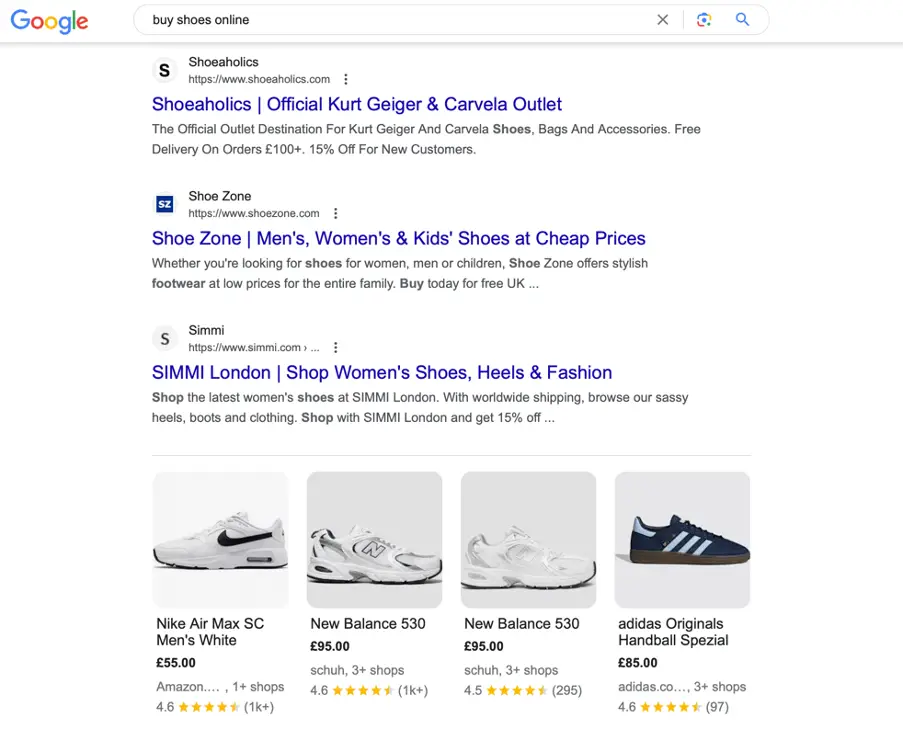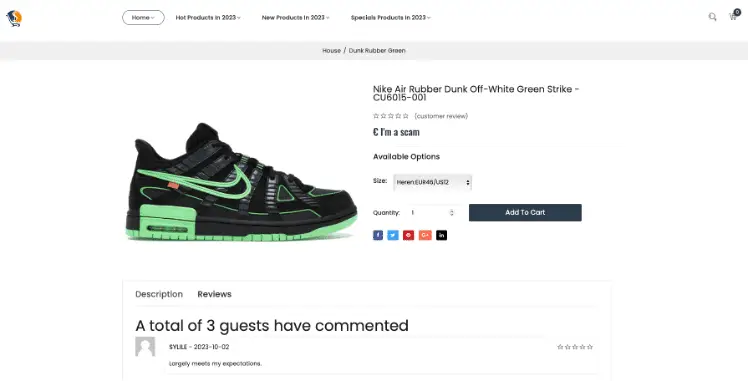Fake shops affect everyone from businesses to shoppers. Whether they’ve scammed you out of your Christmas presents, or they’ve stolen revenue from your company and undermined your Christmas bonus, fake shopping websites must be stopped.
Understanding your obstacles helps you decide your best course of action, and that’s what we’ll cover today. It’s not easy to detect and tackle malicious ecommerce domains, but with the right tactics and tools, it’s possible. The World Intellectual Property Office (WIPO) issued a record number of UDRP domain dispute resolutions in 2022, underlining the surge of IP infringements affecting domains and websites today. These record-breaking figures highlight the unprecedented need for brands to get involved and protect themselves and their customers online. Informed strategies deliver the best results through a step-by-step guide to eliminating fake shops online.
Emerging trends to anticipate in your strategy
In our previous post on fake shops, we discussed how scammers promote their fraudulent stores on social media platforms. It’s important for businesses to consider these tactics when developing their anti-scam strategies. Fake sellers infiltrate people’s online lives, exploiting the trust and familiarity they’ve built on social media to spread their scams.

Understanding how these scams are orchestrated provides valuable insights into the sheer scale and rapid growth of the issue. Today, we are witnessing the emergence of an entire fake shop industry, where nefarious actors mimic professional organizations, complete with logistics and marketing strategies.
These cybercriminals employ a range of tactics to proliferate their deceptive shops. They exploit legitimate platforms like Shopify, while deploying hundreds or even thousands of malicious e-commerce domains. In addition, they harness AI, leveraging language learning models like ChatGPT to pilfer and artfully rephrase website content at scale. This dynamic approach allows them to continuously refine their fake shops, making them all the more convincing to their unsuspecting targets.
As these scammers continually refine the frequency and effectiveness of their fake shops, it is imperative that businesses proactively take measures to thwart their operations and protect their customers.
Tackling fake shops step-by-step
We’ve broken down the fight against fake shops into three steps, so you can see how brand protection experts research, monitor, and eliminate infringements online.
Step 1: Research
Like any battleplan, you need to know your enemy in order to tackle fraudulent stores online. Researching fake shops with a simple search across online channels helps you build a list of evolving scams. Cybercriminals use every online channel available to maximize traffic to their scams, giving brand protection experts plenty to research. Businesses use search engines, marketplaces, and social media searches to cast the net wide. When you alternatively think like a scammer, and think like a consumer, you’ll build an increasingly accurate map of the threat landscape.

Conducting these kinds of searches initiates your journey towards discovering fake shops. Other platforms and channels require more technical tools to detect and catalog suspicious results. However, this initial search forms a key first step. Researching and listing suspicious results around your brand lays the foundations for tackling fake shops.
Step 2: Monitoring
After understanding the threat landscape affecting your brand, monitoring your results helps you succeed in your next steps. Effective monitoring delivers two outcomes: further evidence gathering, and threat prioritization. Evidence gathering delivers the data you need to fuel your takedown procedures, and risk monitoring helps you decide which fake shops to tackle first.

When brands detect a fake shop through their research, they should monitor some key attributes to fuel their takedown strategy. These include:
- The volume, style, and content of their product listings
- Traffic and hyperlinks to other pages
- Contact details, or links to social media platforms like WhatsApp and Telegram, possibly providing hints for offline, real-world investigations
- Links to payment providers
- Stolen copyrights and trademarks, like imagery, branding, and text
Monitoring any changes helps you predict their behavior and anticipate escalations in their threats to your business. To take these outlets down, you often need evidence, so monitoring fake shops as they evolve supports successful anti-scam action.
Step 3: Action
Ultimately, online platforms and legal authorities want you to succeed against fake shops. That’s why they provide frameworks for reporting and eliminating infringements. With enough evidence, tools, and connections, you can levy decisive action against scammers. Social media platforms and online marketplaces often feature reporting tools directly from their channels, providing your first steps in anti-scam action.

Above, you can see Instagram’s reporting tool. It’s always worth exploring options like these, whenever you find a fake shop on a media platform or online marketplace. However, suspicious outlets hosted on their own domains require a different approach.
When scammers impersonate your brand on their own domains, you can escalate legal proceedings to takedown or take over their digital assets. Legal options include UDRPs, URS, and DMCAs. These tactics require a legal team’s time and resources, and they set a strong deterrent against scammers.
With fake shops on the rise, enforcing your brand online takes more work, expertise, and technical acumen than ever. Many businesses opt to collaborate with brand protection experts to achieve these goals. EBRAND’s Online Brand Protection solution streamlines takedown channels and provides all the technical and legal support brands need to eliminate infringements.
Conclusions: Taking control of fake Internet shopping sites
Fake Internet shopping sites might seem insurmountable, but existing solutions combat these attacks on brands and consumers effectively.
Following the steps outlined above, including research, vigilant monitoring, and decisive action, helps you tackle fake shops. However, the true power lies in combining these steps with advanced technical solutions. AI scrapers and algorithmic threat assessment let you confront infringements on a larger scale. The synergy between state-of-the-art software and the insights of an experienced, dedicated team empowers swift and effective action. Together, we can safeguard brands and consumers, delivering effective action against fake shops.
At EBRAND, we’ve just launched brand new, high-impact AI-powered tools to detect and eliminate fraudulent stores online. Get a free fake shop audit here, and you’ll find out how many outlets are hawking your wares online right now.


